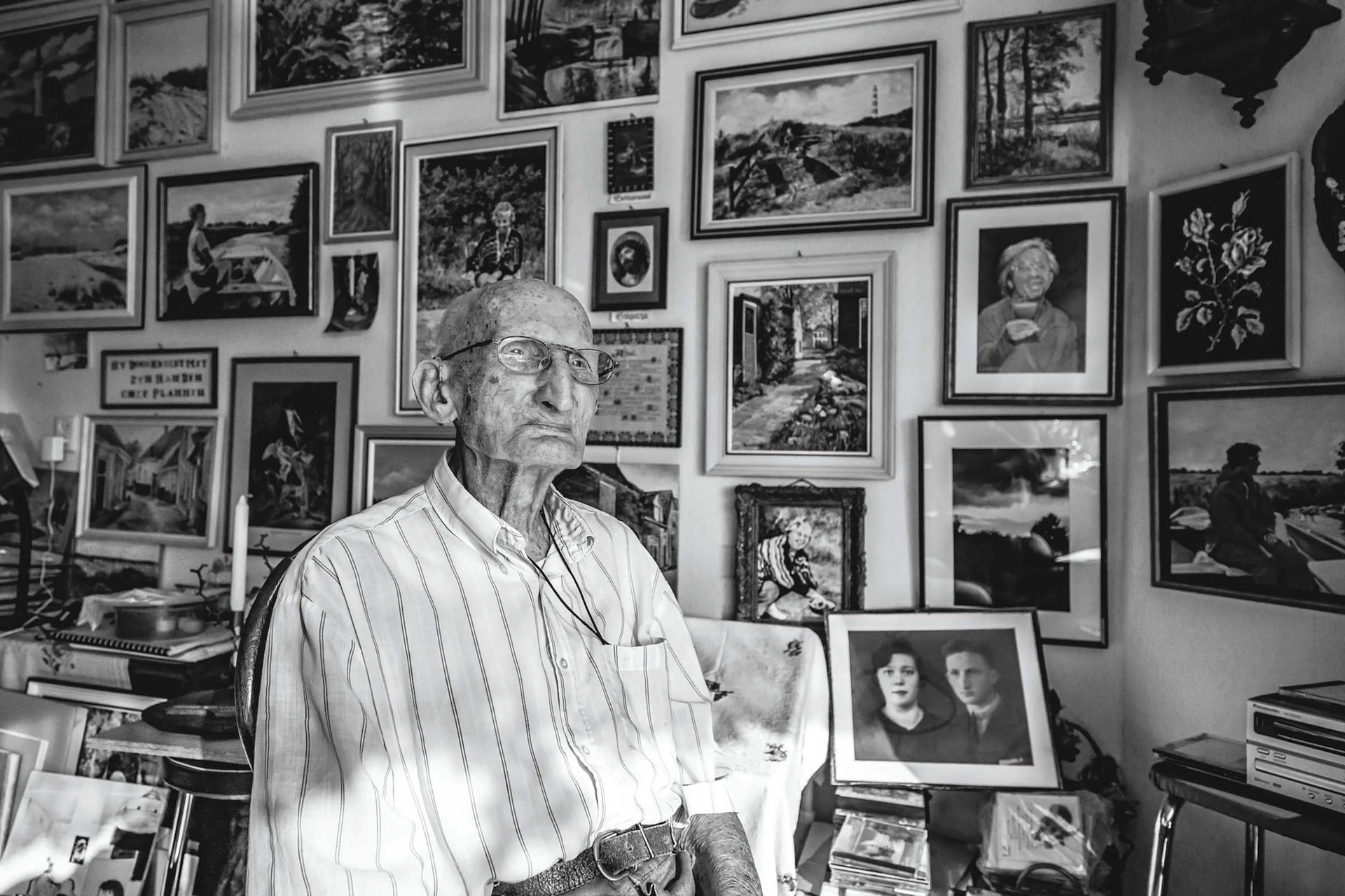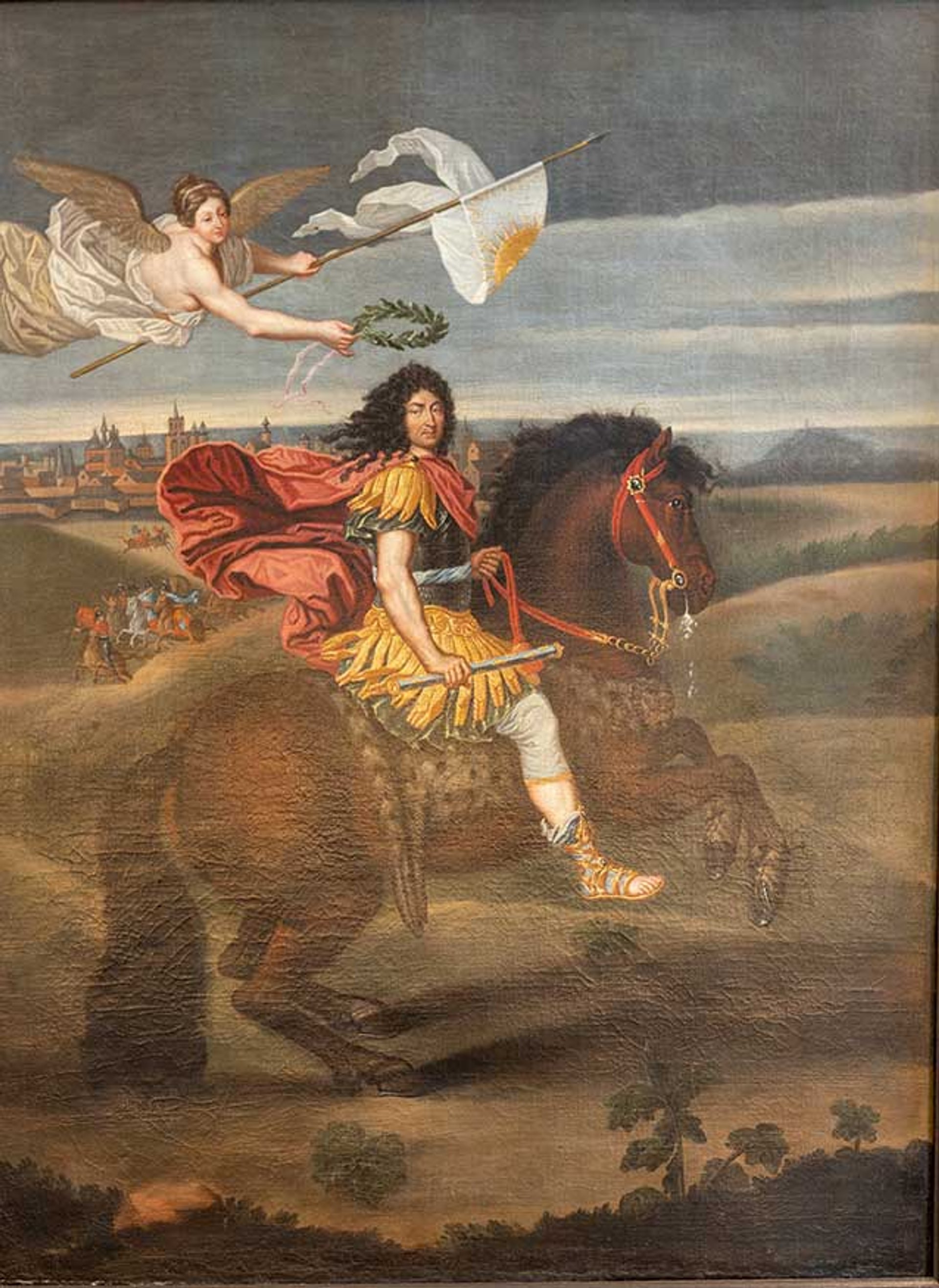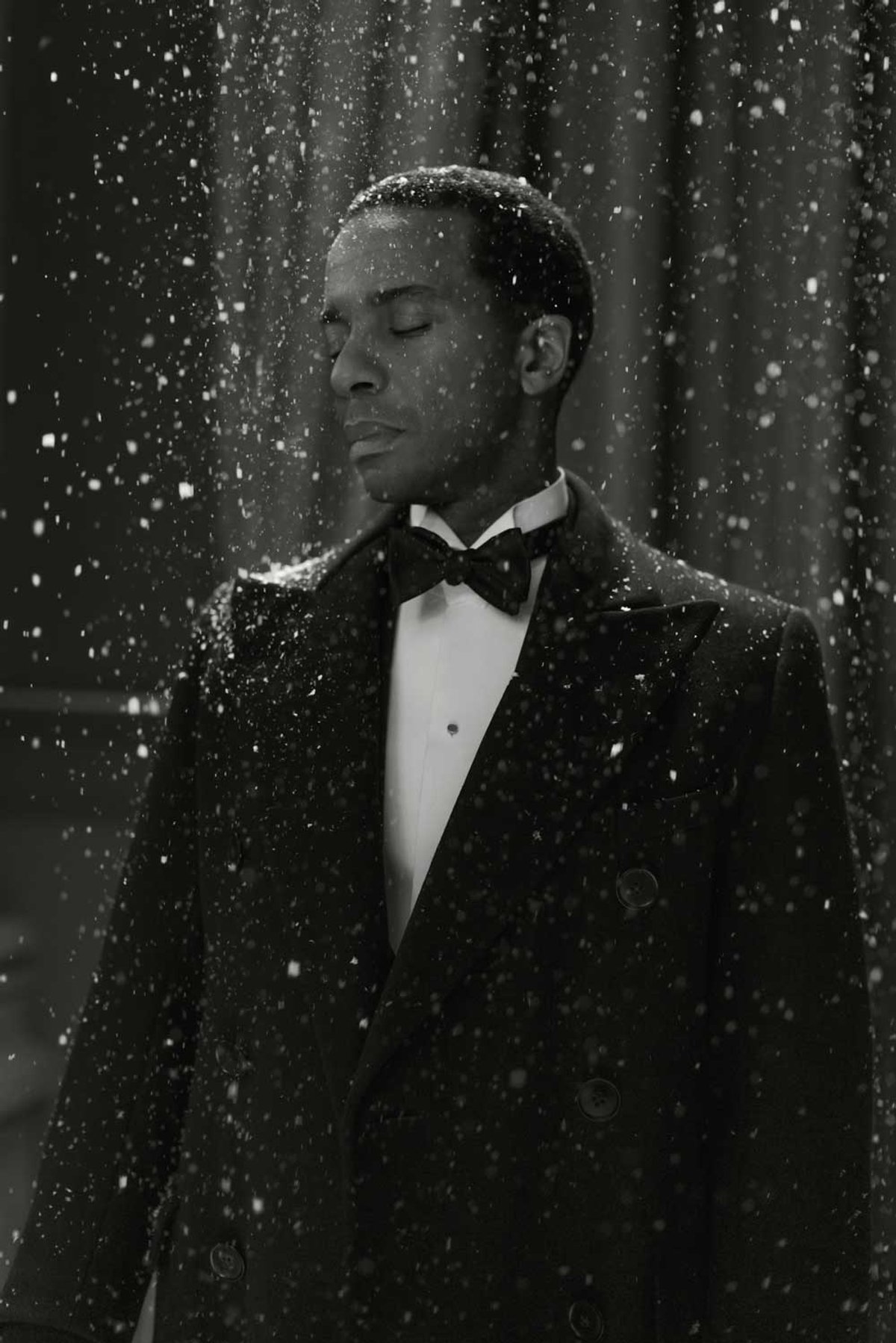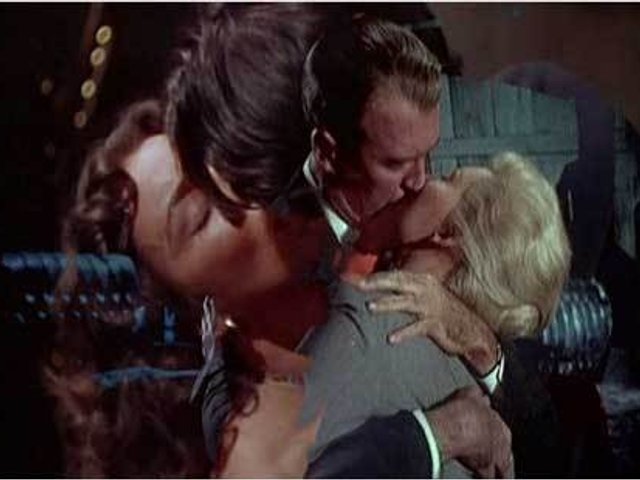Isaac Julien: 40 years of blending film, fantasy and politics to ‘resonate beyond’ the news
Bonnefanten Museum, 9 March - 17 August
Isaac Julien’s elegiac black-and-white film Once Again… (Statues Never Die) (2022) is an elegant institutional critique of the plundering of African art, grounded in the 20th-century love story of the philosopher Alain Locke and the African art collector Albert Barnes. The film unfolds like a collage of moving images—sumptuous re-enactments of Locke’s seductions and debates alongside clips from other films—choreographed across five freestanding, two-sided screens in a darkened gallery of mirrored walls. As Julien’s characters move from screen to screen, like actors on a stage, the film takes on the qualities of kinetic sculpture, immersive architecture or live theatrical production.
Expanding cinema into multi-channel installation “allows the audience to have a more playful relationship to spectating and viewing”, Julien tells The Art Newspaper. It transforms passive observers into what he calls “mobile spectators”: to see the many perspectives, they must look on both sides of the screens.
Once Again… is the most recent film in What Freedom Is To Me, a travelling survey of Julien’s decades-long career that originated at Tate Britain last year and now comes to Maastricht’s Bonnefanten Museum. The exhibition includes works dating back more than 40 years, charting the various ways the artist has deconstructed the conventions of film-making. As in Once Again…, he often multiplies a single screen into many, combining unlikely genres, time periods and source materials into cinematic collage.
Julien, who is best known for casting historical figures in elaborate fantasies with heightened emotions, believes his works’ fictive aspects enable them to reach closer to the truth. “I want to resonate beyond the immediacy of documentary and news reports,” he says. “Certain stories can’t be represented in a straightforward manner because they’re complex or nuanced; they demand a different sort of aesthetic treatment.”
The show reveals the artist’s enduring focus on Black and queer stories that have been lost to time or erasure. The exhibition’s earliest work is his first-ever film, Who Killed Colin Roach? (1983), a single-channel video made in response to the fatal shooting of a young Black man in an east London police station. Soon after, Julien rose to prominence with Looking for Langston (1989), a black-and-white film that “utilises fantasy as a form of political allegory”, he says. It imagines the revered poet Langston Hughes in a queer romance during the Harlem Renaissance, while simultaneously addressing the queer politics of Julien’s native London in the late 1980s. Released amid a climate of rampant homophobia stoked by the AIDS epidemic, the film quickly became a landmark work in what would come to be known as New Queer Cinema.
Following Julien’s single-channel works of the 1980s and early 1990s, advances in technology allowed him to make more complex installations involving multiple screens. “I thought, well, if I’m going to make moving image works in the gallery, I want to think about the sculptural relationship to the work,” Julien says. His early pieces, however, still feel fresh. Appearing alongside the new footage of Once Again… are clips from Looking for Langston as well as from the Ghanaian filmmaker Nii Kwate Owoo’s 1970 short You Hide Me, which argues for the repatriation of the Benin Bronzes. Presenting them simultaneously and side-by-side, Julien highlights correlations that transcend their respective eras. “In a circular sense, there’s a way in which these early works resonate in this contemporary way—which I obviously didn't think they would still,” he says. That is, these issues have yet to be resolved.

Humberto Tan's show at the Fotomuseum at the Vrijthof features black-and-white photographs of centenarians snapped during a three-year trip
Photo © the artist
Photo project focuses on the optimism of age
Fotomuseum at the Vrijthof, until 27 March
Tomorrow Will Be Better is the culmination of a three-year project by Humberto Tan, a longtime sportscaster on Dutch television and radio. From 2020 to 2023, Tan travelled throughout the Netherlands to the homes of residents who were at least 100 years old, taking black-and-white photographs of them in their living rooms. The images capture expressions of wistfulness, vitality and joy. He also shot close-ups of his subjects’ hands, some of which were processed through an elevated printing technique that provides a tactile element to the project. Visitors are invited to touch the prints and feel their raised lines and contours.
Naturally, Tan included a journalistic component to the show, which was organised at the Fotomuseum at the Vrijthof by guest curator Anke Degenhard. He interviewed each subject about their experiences of happiness, fear, life and death. The conversations accompanying the portraits span a wide range of memories, secrets to a long life and even dietary tips. “Don’t smoke, don’t drink and don’t chase parties or things,” advised one subject. A running theme of the show is captured by its title, Tomorrow Will Be Better, taken from a 1939 song by Dutch singer Willy Derby: Tan was struck by his subjects’ enduring optimism as they continue to look to the future.

The Sun King Louis XIV captured the city's fortress in 1673
Photo: Johan Strijckers
Maastricht under attack
Maastricht Museum, until 31 March
As home to the northernmost bridge across the Meuse river, Maastricht was a historically important site in Dutch military strategy. The year 1673 was a pivotal one in the city’s past, as the French King Louis XIV’s army besieged Maastricht during the Franco-Dutch War and captured its fortress over a period of 13 days.
Running until 31 March at the Maastricht Museum is the exhibition Maastricht 1673: The Sun King Conquers the City, which opened last year during the 350th anniversary of the siege. The show unites historical objects from the museum’s permanent collection with loans from other institutions to reflect on the period’s social and political conditions. The centrepiece is a map drawn by cartographer John Scott detailing key sites during the assault, including where the titular Sun King encamped and where d'Artagnan, the famed French soldier who inspired Alexandre Dumas’s 1844 novel The Three Musketeers, was killed in the battle.

Opaque Spirits is a multidisciplinary project at Marres by Peruvian artist Arturo Kameya
Photo © the artist, courtesy of the artist and GRIMM gallery
Ghosts of Peru haunt Kameya’s surreal mansion
Marres House for Contemporary, until 26 May
In Opaque Spirits, the Peruvian-born artist Arturo Kameya turns Marres into an ailing, haunted hotel. The façade of Marres House for Contemporary Culture features large-scale paintings of Messianic imagery, and the interiors are transformed by Surrealist murals and bizarre, immersive scenography: a tiled bath house that doubles as a restaurant; large-scale sculptural fish suspended in mid-air. Wan, fluorescent lighting matches the greenish patina the artist applied to the walls, evoking the supernatural luminosity that frequently appears in his paintings.
Kameya collaborated with his fellow Peruvian artist Claudia Martínez Garay on the exhibition, which criticises the shortcomings of their country’s government by unleashing the ghosts of Peru into the historic mansion. The hotel itself borrows the late Venezuelan playwright José Ignacio Cabrujas’s description of his own nation as “a gigantic hotel where we are barely guests”—a place over which visitors have no ownership and thus no motivation to provide upkeep, and where the state is the most ineffectual manager. In Kameya’s multidisciplinary practice, ghosts often symbolise the remnants of the past while nodding to Peruvian superstitions.





